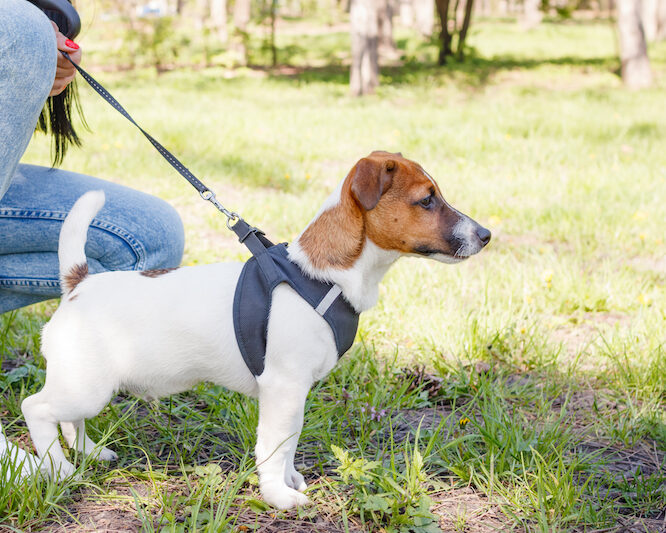Many people out there think that their dogs just naturally know how to behave politely on a leash, but this couldn’t be any further from the absolute truth. Like many other things, leash-walking is a skill that needs training. It is an essential knack for your dog to learn, and despite what some people may think, the process of teaching your dog how to do it isn’t that hard. There are some simple things that you can do to make the situation easier for your dog if they decide to start misbehaving, which means that there’s always a solution!
Alternatively, you can choose to send your dog for a basic obedience class and let the experts take care of it. But to get you started here is a simple 3-step process to make your pup comfortable with a leash.
3 Steps to Making Your Puppy Comfortable With the Leash
Familiarise Your Dog With the Leash
Before taking a step outside, you should gear your dog up with the proper equipment – collar or harness and give them enough time to adjust to it. When it comes to young puppies, use a snug-fitting harness that they can easily step into. The harness shouldn’t be too loose either because they might slip out of it while wearing it outside. Your dog should wear their new harness around the house until they start accepting the idea of wearing it outside, too.
The next thing you should do is attach a leash that’s either four or six feet in length to the harness and let the dog drag the leash around at home until they start getting used to being attached to it. You can even connect the least to yourself first if it makes things easier for you and your dog. This little exercise should help your dog understand that being attached to a leash means spending more time with its owner.
Practice Using the Leash At Home
Practising the “heel” command is another important thing you should do here. This command refers to having your dog walk beside your feet. You should practise this command at home before taking your dog outside with you. First, tell your dog to sit beside you on either the right or the left side and then stick to your side of choice throughout the entire exercise. Remaining consistent with your side of choice should make it easier for your dog to learn their new walking routine faster.
Once your dog is sitting beside you, take their favourite treat, lower it to their nose, and take a small step forward while saying ‘”heel”. If the dog follows your command, praise them and give it to them as a reward.
If your dog has already become comfortable walking beside you at home, you should start doing this exercise outside. First, make sure to pick a familiar location where the dog feels comfortable. Then, continue doing the same things that you were doing at home and slowly start extending the length of the walk until you’re sure that the dog will stay with you at all times.
Hold Your Dogs Attention
When it comes to dogs lunging and pulling on the leash, it’s one of the most common problems that dog owners come face-to-face with. If this is something that you’re having problems with, there are a few different things that you can do to resolve the issue. For example, if you’ve already practised heeling with your puppy but they’re still pulling, there’s a good chance that they’re just distracted by what’s ahead. In this case, you should try and maintain your dog’s attention by giving them a high-value treat reward.
Keep in mind that it’s entirely normal for puppies to pull on their leash initially. This is because it’s in their nature to pull ahead, sniff, and greet just about any person or dog that they come across. It takes time for them to follow commands and will take some practice in several different locations.
Even if your dog does a great job following your orders at home, they may still exhibit some lunging or pulling when in a new place. This doesn’t mean that you didn’t do a good job teaching your dog to walk on a leash – it simply means that the dog is excited and needs a little time to adjust to the new environment. If possible, give your dog some time to settle down before trying to get their attention again. And once you both have mastered this skill, you can move on to the next. Here are some basic things you can teach your pup at home.
Conclusion
Despite their seemingly endless energy, puppies tend to have a short attention span. That being said, you should never expect a young dog to cover a long distance with you until they reach adulthood and become more mature. However, you should also be patient and let your dog sniff new things, run around trees and bushes, and simply enjoy being outside with you. After all, taking your dog out for a walk should always be a fun experience, not a chore or a time for perfect heeling. So, take it easy, give your dog some time to become more comfortable with the leash, and enjoy the learning process together with them!
You can also take the help of professional dog trainers to help you with the process. They have many more tricks up their sleeves to make your pup comfortable with the leash.







